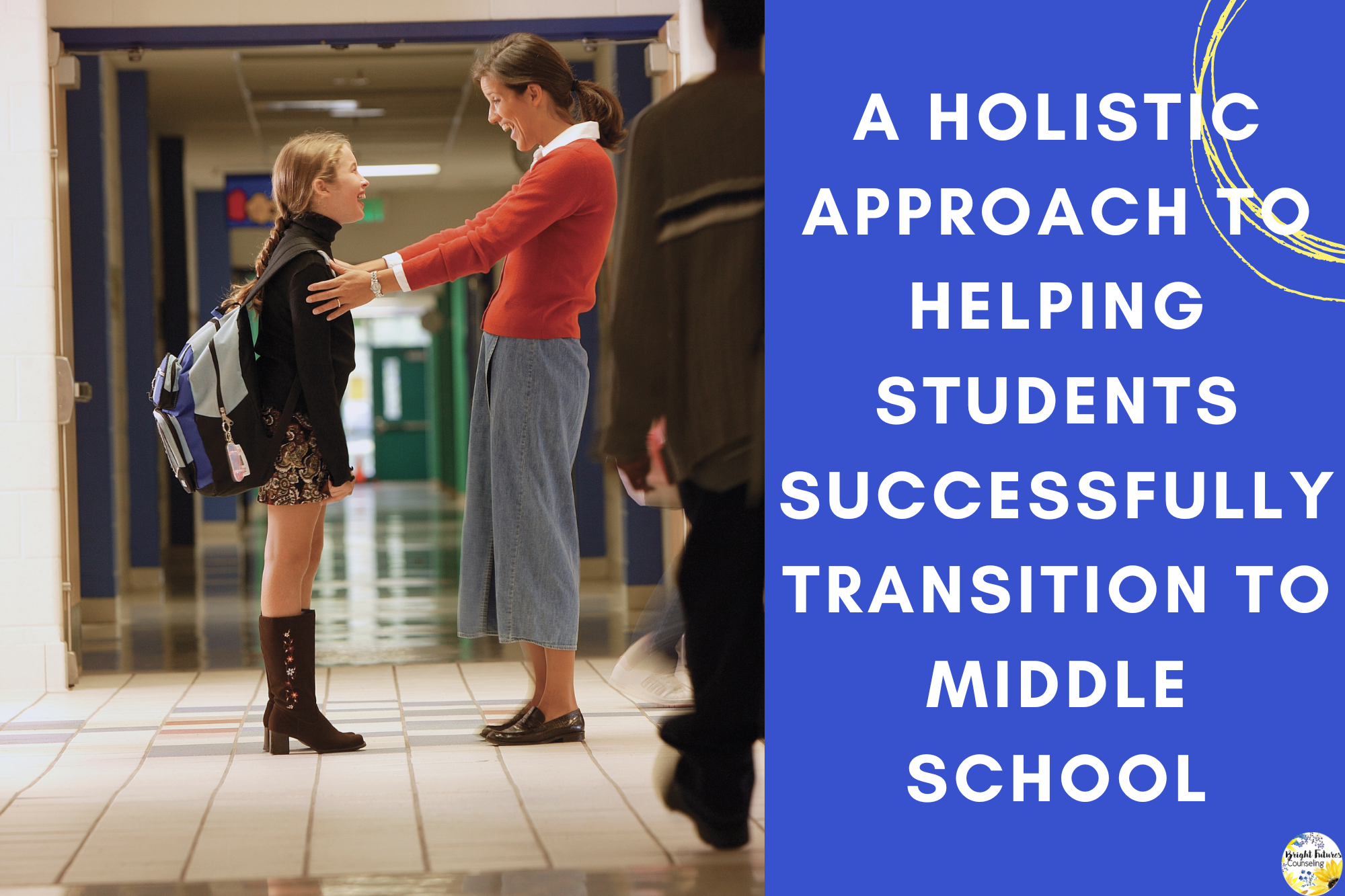By: Neeti Sarkar
As I write this blog post, I cannot help but feel relieved that I have only 31 working days before we go on summer break. That said, 31 days seem like too little, given all the end-of-year responsibilities counselors have and all the loose ends we’ve got to tie up. One such important process (I prefer not to call it an event, and you’ll see why), is helping fifth graders transition successfully to middle school.
For us counselors who’ve been doing this for years, perhaps it’s only the planning and executing of the transition that seems daunting. But for our kiddos moving up to grade six, this is bound to be a massive change – a change in environment, routines, and expectations – all of which can cause anxiety and stress.
While teaching transition lessons is definitely a must-do, it would serve our students well if we viewed this phase in a more holistic manner. A holistic approach to transitioning students involves addressing their physical, social, emotional, and academic needs. If we are advocates of whole-child development, you would agree this approach recognizes that a student’s overall well-being is interconnected and that addressing one area can positively impact other areas. Wondering how to action this approach? Read on.
1. Addressing Physical and Logistical Needs
Prior to our transition to middle school, during our “Who We Are” unit, the focus is on puberty and personal safety. Discussing transition in the light of how their bodies are changing and the increased importance of self-care and good hygiene, helps students understand that change is the only constant in our lives. Having that mindset helps them be better prepared for what’s to come in the new academic year.
The other aspect of addressing physical needs during the transition would be to ensure the physical environment students will be moving into is viable. Middle school can seem like a whole new world with so many students and sometimes fewer smiling faces of teachers! This can cause students to get overwhelmed and feel lost or isolated. As counselors, we should try to collaborate with teachers to make the school environment more welcoming and accessible. This can include creating maps of the school, taking students on a tour of the school, showing them where their lockers are, or assigning peer mentors to guide new students around the campus.
2. Addressing Social Needs
Now is when students are coming into themselves and discovering who they really are. At the start of this unit, the focus of my classroom lessons is on identity, diversity, stereotypes, bias, discrimination, and social justice. I find that the fruit of these lessons comes forth in the form of students and teachers working together to foster a positive and inclusive school culture, which is especially important when students make the transition to middle school. Supporting students by providing opportunities for them to socialize and connect with their peers is another must-do. I’ve found that ASAs (after-school activities) are a great way for students to meet like-minded students.
3. Addressing Emotional Needs
One of my big responsibilities during the process of transition is to introduce my fifth graders to the middle school counselor. Students are bound to experience a mixed bag of emotions, whether as a part of puberty and/or having to move up to middle school. Feelings of stress, anxiety, and low self-esteem are common at this time. The onus is on us counselors to equip students with coping skills to work through the challenges that come with transition. It’s important for students to know they still have a safe and supportive person and place to go to when they are feeling overwhelmed.
4. Addressing Academic Needs
In my school, we have a 1:1 iPad for students policy. But when students enter middle school, they are expected to use a laptop. This means there is a need to teach them how to use specific learning portals and platforms, how to upload evidence of their learning, etc. This is something we ask the secondary school teachers to handle during Transition Week for our fifth graders since they are the ones familiar with the nuances of it all. Middle school is also when students get “homework” and academic expectations can get overwhelming. From 60-minute lessons to 90-minute ones, sixth graders have a lot to get used to. Then, of course, it’s important to help our students with some executive functioning skills such as organization and time management. Teaching study skills and time-management strategies, and setting clear expectations for behavior and academic performance, helps students transition better into middle school.
Having said all of this, there’s no way we as counselors can do everything on our own. Therefore, it is only wise to collaborate with teachers and with parents to ensure our students transition successfully and with ample support from all quarters.
About the author: Neeti Sarkar is a Primary School Counselor at an IB school in Bangalore, India. Over the span of almost 10 years, she’s worked with students aged 3-18, but enjoys working with the littles the most. Neeti’s also a seasoned journalist, so when she isn’t making behaviour plans, teaching guidance lessons, and supporting her school community in various other ways, she makes time for her other passion- writing.





Leave a Reply